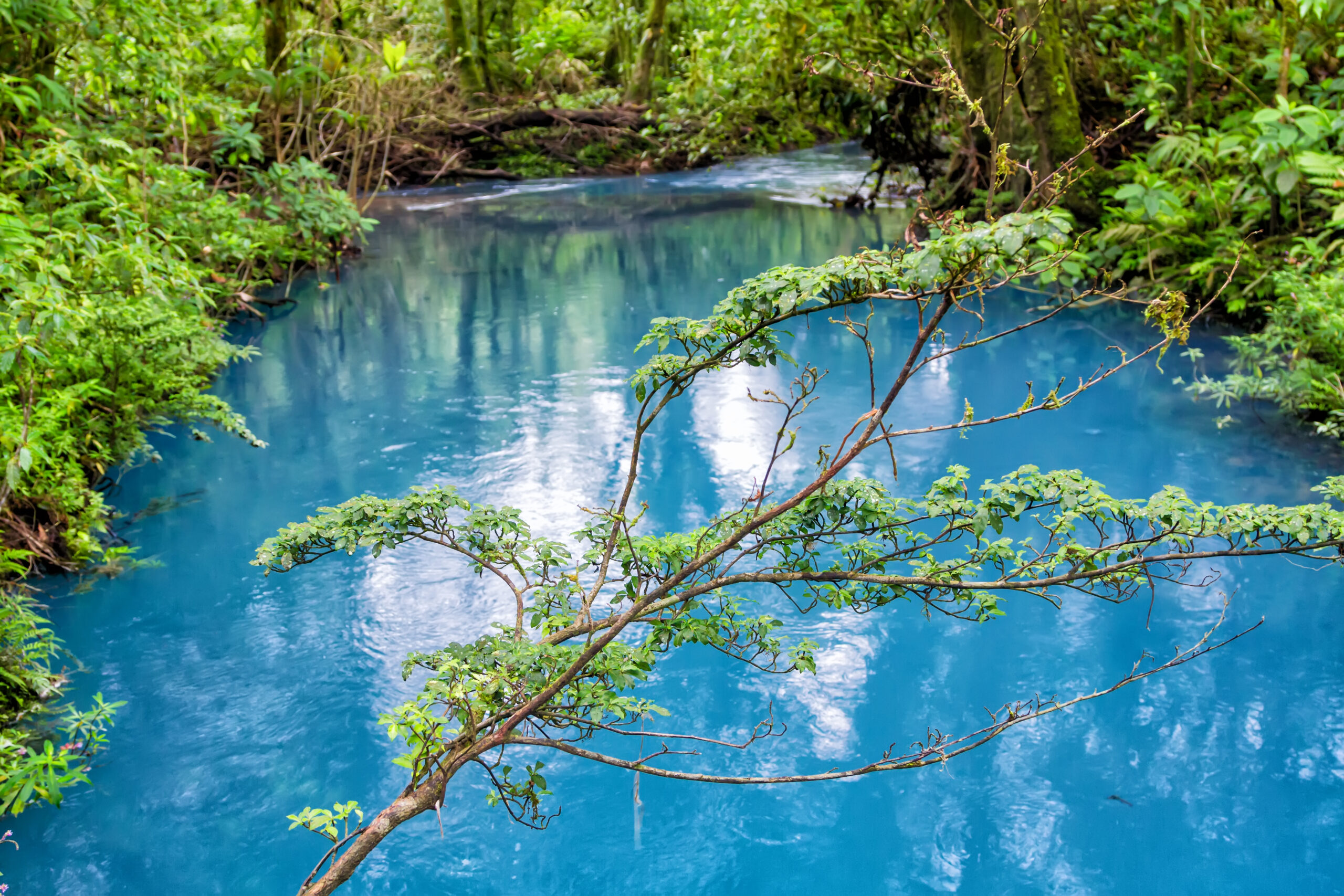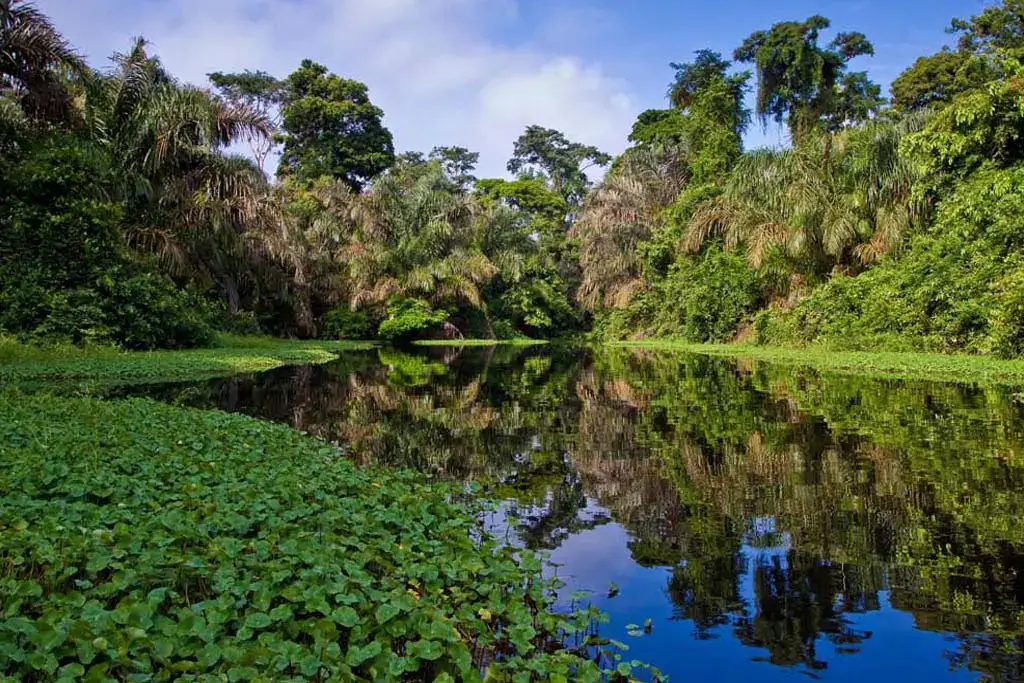
Top #1 Costa Rica Travel Guide
Things you need to know to plan your vacation
Welcome to the ultimate Costa Rica Travel Guide, where we dive into the enchanting world of this tropical paradise. From lush rainforests to jaw-dropping beaches, Costa Rica is a dream destination for nature lovers and adventure seekers alike. Whether you’re craving adrenaline-pumping activities or seeking solace in serene landscapes, this Central American gem has it all.

Costa Rica as a travel destination
Costa Rica is renowned for its breathtaking natural beauty. From towering volcanoes to cascading waterfalls, this country boasts some of the most diverse ecosystems in the world. Remarkably, over a quarter of Costa Rica’s land area is safeguarded within some of the world’s most esteemed national parks and reserves, illustrating a profound dedication to conservation. Hunting is unequivocally banned, underscoring the country’s commitment to wildlife protection.
Costa Rica is home to 5% of the world’s biodiversity, despite covering only 0.03% of the Earth’s surface. This rich biodiversity includes more than 500,000 species, from colorful birds and amphibians to a vast array of insects and mammals. The country’s varied climates and ecosystems, ranging from tropical rainforests to dry savannas, provide habitats for species that are often found nowhere else on the planet.
The country’s approach to ecotourism and sustainable development serves as a model for the world, balancing the needs of its environment with the desires of the travelers who flock to its shores. Costa Rica welcomes over 1.7 million visitors annually, with a significant number arriving from the United States and Canada, contributing to the country’s tourism revenues of over $1.7 billion US dollars each year. Remarkably, it is believed that up to 80% of these travelers are drawn to Costa Rica for its eco-tourism opportunities, seeking to engage with and explore the nation’s renowned natural beauty and biodiversity.
Adventure tourism is another hallmark of the Costa Rican experience. The country’s diverse terrain offers everything from whitewater rafting on its rushing rivers to zip-lining through cloud forests. For those drawn to the allure of the coast, Costa Rica’s beaches are among the most pristine and relaxed in Central America. With two coastlines, one facing the Pacific Ocean and the other the Caribbean Sea, the country offers a myriad of beach experiences, from the vibrant surfing culture of the Pacific to the laid-back, Caribbean vibe of its eastern shores.
Things to see and do in Costa Rica
Costa Rica is a paradise for adventure seekers and nature enthusiasts alike. Its diverse landscapes, lush rainforests, stunning beaches, and abundant wildlife, there is no shortage of exciting activities to enjoy during your visit.
Experience the nature and National Parks
One of the top things to do in Costa Rica is exploring its national parks.
- Manuel Antonio National Park offers beautiful hiking trails, pristine beaches, and the chance to spot monkeys swinging through the trees. It’s located about three hours south of Costa Rica’s capital, San Jose. It’s open every day except Mondays, and we’ll help you book a tour with a great professional bilingual guide. The guide will walk the mile-long trails in the park with you and explain everything about the tropical rainforest and all the animals that live here.
- Tortuguero National Park stands out as a distinctive gem within Costa Rica, renowned for its intricate network of canals and rivers weaving through the lush rainforest. The national park, a sanctuary for biodiversity, is home to over 300 species of birds, alongside a rich array of other wildlife. This includes crocodiles and caimans lurking in the waters, and manatees gently navigating through. It’s is a haven for sea turtles and throughout the nesting season, Tulu Travel offers guided turtle tours accessible from every hotel in the vicinity.
- Arenal Volcano National Park: The Arenal Volcano region is the epicenter of adventure in Costa Rica, where exhilarating activities meet breathtaking natural beauty. This area invites you to marvel at spectacular waterfalls, soar through the rainforest on a 1000-meter zipline, and unwind in soothing hot springs, all set against the stunning backdrop of the iconic, perfectly cone-shaped Arenal Volcano. Adjacent to the volcano lies the quaint and welcoming town of La Fortuna, a hub of convenience and comfort for travelers. La Fortuna offers a wide selection of accommodations, eateries, bars, and shops, catering to every need.
- Monteverde’s cloud forest reserve: Perched high in the mountains at an elevation of 5,900 feet (1,800 meters) above sea level, the Monteverde Cloud Forest offers an enchanting escape into a world brimming with biodiversity. Exploring the Monteverde Cloud Forest can take many forms. For those who prefer the classic approach, there are numerous breathtaking trails winding through the forest, offering hikes ranging from 1 to 6 hours to suit different levels of endurance and interest. For adventurers seeking a thrill, the canopy tour, known locally as ziplining, presents an exhilarating way to experience the cloud forest from above. The high altitude of Monteverde creates an ideal climate for both agriculture and livestock farming.Visitors have the opportunity to immerse themselves in the local agricultural practices through coffee, cacao, and sugarcane tours, as well as visit a local cheese factory to witness the production process.
Costa Rica’s natural wonders extend beyond its famed reserves. The geothermal activity fuels Hot Springs, showcasing the country’s volcanic landscapes and providing serene relaxation spots. The fertile lands around them support diverse ecosystems, providing invaluable insights into geological processes and fuels the rich biodiversity, including many endemic species and wildlife. The dense Costa Rican rainforest harbors an array of activities that highlight its global ecological significance and conservation efforts.
Experience the adrenaline
Costa Rica is a paradise for adrenaline seekers, offering a natural playground where lush jungles meet towering mountains and rushing rivers.
- Whitewater Rafting: Experience the thrill of navigating through Costa Rica’s turbulent rivers on a whitewater rafting tours. Whether you’re a beginner or a seasoned rafter, Costa Rica’s varied river landscapes offer something for every level of adventure. You’ll paddle through cascading rapids surrounded by the vibrant flora and fauna of the rainforest, making for an unforgettable adventure that combines adrenaline with the awe-inspiring beauty of nature.
- Zip-lining: Take to the skies with a canopy zip-line tour, where you’ll soar above the treetops and experience the rainforest from a bird’s eye view. Zip-line courses are designed to thrill, featuring long cables that stretch across the canopy, allowing you to glide at heart-racing speeds. It’s an exhilarating way to appreciate the complexity of Costa Rica’s ecosystems while satisfying your hunger for adventure.
- Surf: Ride the waves of Costa Rica’s famous beaches! Catering to both beginners and experienced surfers, Costa Rica offers the chance to master the art of surfing in some of the world’s most sought-after surf spots.
Experience the local cuisine
Don’t miss out on experiencing Costa Rica’s unique culture by visiting vibrant local markets like Mercado Central in the capital San Jose or participating in traditional cooking classes where you can learn how to make delicious dishes using fresh local ingredients.
Get ready to tantalize your taste buds with these captivating dishes:
Gallo Pinto: Awaken your senses with this traditional breakfast masterpiece. Sautéed rice and beans, infused with aromatic onions, peppers, and spices, create a symphony of flavors that perfectly complement eggs or meat. This hearty dish is the ultimate morning fuel, promising to kickstart your day in the most delicious way.
Ceviche: For seafood enthusiasts seeking a refreshing delight, Ceviche is an absolute must-try. Imagine succulent raw fish marinated in zesty citrus juices like lemon or lime, mingling harmoniously with crisp onions, vibrant cilantro, and a medley of tantalizing seasonings. Each tangy bite bursts with an explosion of flavors that will transport you straight to the shores of Costa Rica.
Casado: Brace yourself for a gastronomic adventure with Casado, a plate brimming with hearty goodness. Experience the harmonious blend of fluffy rice, velvety black beans, sweet plantains, and a medley of salad greens. As if that weren’t enough, choose your protein, be it succulent chicken or delectable fish, and savor the satisfaction of a complete, soul-nourishing meal.
Quench your thirst and toast to the tropical paradise that is Costa Rica with these irresistible beverages:
Batidos (Fruit Smoothies): Take a sip of pure refreshment as you indulge in Batidos, delightful fruit smoothies bursting with the tropical essence of Costa Rica. Whether you opt for the vibrant sweetness of mango, the tangy zest of pineapple, or the velvety richness of papaya, these luscious concoctions offer a revitalizing respite from the sun-kissed adventures that await.
Imperial Beer (The National Beer): Raise a glass to Costa Rica’s rich brewing traditions with an ice-cold Imperial Beer. As you relish the crisp, golden elixir, appreciate the craftsmanship and pride poured into each sip. It’s the perfect beverage to quench your thirst and celebrate the enchanting spirit of this captivating country.
Best Time to Visit Costa Rica
Costa Rica is a year-round destination with diverse landscapes and microclimates, offering something for every traveler. However, the dry season, which typically runs from December to April, is widely regarded as the best time to visit. During this period, the weather is generally sunny, with lower chances of rain and optimal conditions for outdoor activities. This is especially ideal for exploring the best places in Costa Rica, such as the stunning Pacific beaches, the lush rainforests of Monteverde, and the breathtaking Arenal Volcano. The dry season also coincides with the peak tourist season, ensuring vibrant nightlife, bustling markets, and a lively atmosphere.
Read more: Costa Rica Weather Guide
- Read more: Best time to visit Costa Rica



Flying Into Costa Rica
The country has two major international airports: Juan Santamaría International Airport (SJO) in San José and Daniel Oduber Quirós International Airport (LIR) in Liberia.
Juan Santamaría International Airport serves as the primary gateway for travelers, conveniently located near the capital city of San José. It offers a wide range of international flights and is a convenient starting point for exploring the central region and popular destinations like Arenal Volcano and Monteverde Cloud Forest.
On the other hand, Daniel Oduber Quirós International Airport serves the northwestern part of Costa Rica, particularly the Guanacaste region. This airport is a great choice for those seeking to discover beautiful beaches and resorts in places like Tamarindo, Playa Flamingo, and Papagayo.
Both airports offer modern facilities, transportation options, and access to nearby attractions. No matter which airport you choose, keep in mind that customs and immigration procedures are usually straightforward and efficient. Just make sure you have all your necessary travel documents ready upon arrival.
Costa Rica Travel Requirements
First and foremost, make sure your passport is valid for at least six months from the date of entry into Costa Rica. This is a crucial requirement that cannot be overlooked. Additionally, visitors must have a return ticket or proof of onward travel to enter the country.
Visitors from many countries do not need a visa to enter Costa Rica; however, they are required to fill out an Immigration Form upon arrival. This form will ask for basic information about yourself and your stay in the country.
It’s also essential to have proof of sufficient funds during your stay in Costa Rica. While there is no specific amount mentioned, having a reasonable sum available will ensure smooth entry.
Furthermore, travelers should check if any vaccinations are recommended before visiting Costa Rica. Although no mandatory vaccines are required, it’s always wise to consult with your healthcare provider regarding any necessary precautions.
It’s highly advisable to purchase travel insurance before heading off on your trip. Travel insurance provides peace of mind in case of unexpected situations such as medical emergencies or lost luggage.



Costa Rica Travel Safety
Costa Rica is known for being one of the safest countries to visit in Central America. Traveling to Costa Rica provides a sense of security that allows visitors to fully immerse themselves in the country’s natural wonders without worrying about their safety.
One of the reasons why Costa Rica is considered safe for travelers is its stable political environment. The country has been a democracy since 1949, which has contributed to a peaceful and secure atmosphere. Additionally, Costa Rica abolished its army back in 1948, further emphasizing its commitment to peace and stability.
In terms of crime rates, Costa Rica fares relatively well compared to other countries in the region. While petty theft can occur in tourist areas or crowded places like markets or bus stations, violent crimes are generally rare. However, it’s always important to take common-sense precautions such as keeping an eye on your belongings and avoiding displaying expensive items openly.
The local authorities also prioritize tourist safety by maintaining a strong presence throughout popular destinations. Tourist police officers are readily available to assist visitors with any concerns or emergencies they might have during their stay.
How to stay safe in Costa Rica
When it comes to transportation safety, it’s recommended that travelers use licensed taxis or reputable transportation services rather than hitchhiking or accepting rides from strangers. It’s also advisable not to leave valuables unattended inside vehicles.
While exploring nature reserves and national parks in Costa Rica, tourists should be aware of their surroundings and follow instructions provided by park rangers regarding hiking trails and wildlife encounters. Respecting nature will not only keep you safe but will help preserve these incredible ecosystems for future generations.
While no destination can guarantee absolute safety at all times, traveling through Costa Rica is generally considered low risk compared to many other countries around the world. By exercising caution and being aware of your surroundings, you can confidently enjoy everything this amazing country has to offer without compromising your personal safety.
Read More: Is Costa Rica Safe To Travel
Items To Bring
When preparing for a trip to Costa Rica, packing well is key to ensuring a comfortable and enjoyable adventure.
Pack lightweight, breathable clothing suitable for warm weather, including shorts, t-shirts, and swimwear. Don’t forget to bring a good pair of walking shoes or hiking boots for exploring the country’s scenic trails. Since Costa Rica is known for its tropical climate, remember essentials like sunscreen, a hat, and insect repellent. For visits to the beach or coastal areas, pack a beach towel, sunglasses, and a reusable water bottle.
If you plan to explore the rainforests, consider bringing a rain jacket, waterproof bag, and sturdy backpack. Additionally, include a camera or smartphone to capture the breathtaking landscapes and wildlife encounters. By packing wisely, you can fully enjoy the wonders of Costa Rica and make the most of your journey to the best places this remarkable country has to offer.
Mistakes to Avoid When Visiting Costa Rica
Costa Rica is a beautiful and diverse country, but it’s important to be aware of certain mistakes that tourists often make when visiting. Here are some common errors to avoid during your trip:
- Not learning basic Spanish: While English may be widely spoken in tourist areas, knowing some basic Spanish can go a long way in enhancing your experience in Costa Rica. It’s also a good way to show respect for the local culture.
- Not researching transportation options: Depending on where you’re staying and what activities you have planned, transportation can be tricky in Costa Rica. Be sure to research different options such as shuttles, taxis, or rental cars to determine which is most suitable for your trip.
- Overpacking: As mentioned before, it’s important to pack light and only bring essentials. Bringing too much luggage can make moving around the country more difficult and may result in additional fees for transportation.
- Ignoring safety precautions: While Costa Rica is generally a safe country, it’s still important to take necessary precautions to avoid any potential risks. This includes being aware of your surroundings, not leaving valuables unattended, and following any safety guidelines for activities such as hiking or water sports.
- Not trying local food and drinks: Costa Rica is known for its delicious cuisine and drinks, so don’t miss out on the opportunity to try some local dishes. And of course, don’t forget to try a cup of locally grown coffee – it’s a must!
By avoiding these common mistakes and being prepared for your trip, you can make the most out of your time in Costa Rica.
Costa Rica Travel Guide FAQ
Costa Rica is located in Central America, bordered by Nicaragua to the north and Panama to the southeast. It is situated between the Pacific Ocean to the west and the Caribbean Sea to the east.
The official language of Costa Rica is Spanish. However, English is widely spoken in tourist areas and by many locals involved in the tourism industry.
Costa Rica has a tropical climate, and the best time to visit depends on your preferences. The dry season, from December to April, is popular among tourists due to lower rainfall and sunny weather. The wet season, from May to November, offers lush green landscapes and fewer crowds.
It is recommended to be up to date on routine vaccinations before traveling to Costa Rica. Depending on the areas you plan to visit, additional vaccinations such as Hepatitis A and Typhoid may be advisable. It’s best to consult with a healthcare professional or travel clinic for personalized advice.
It is generally safe to drink tap water in most parts of Costa Rica. However, to be on the safe side, many tourists prefer to drink bottled or filtered water, especially in more rural areas.
Getting around Costa Rica is relatively easy. The country has a well-developed transportation system with buses, taxis, and rental cars. Domestic flights are also available for longer distances. However, traffic in major cities can be congested, so it’s advisable to plan accordingly.
The official currency of Costa Rica is the Costa Rican colón (CRC). U.S. dollars are widely accepted in many tourist areas, but it’s a good idea to have some local currency for smaller establishments and in more remote regions.
It’s advisable to check the CDC website for any necessary vaccinations or health precautions before traveling.
Road conditions can vary, but major routes are generally well-maintained. 4×4 vehicles are recommended for remote areas.
It depends on your nationality. Many countries, including the US and EU countries, don’t require a visa for short visits.
While the official currency is the Costa Rican colón, US dollars are widely accepted in tourist areas.
While not mandatory, travel insurance is strongly recommended to protect against unexpected events.




